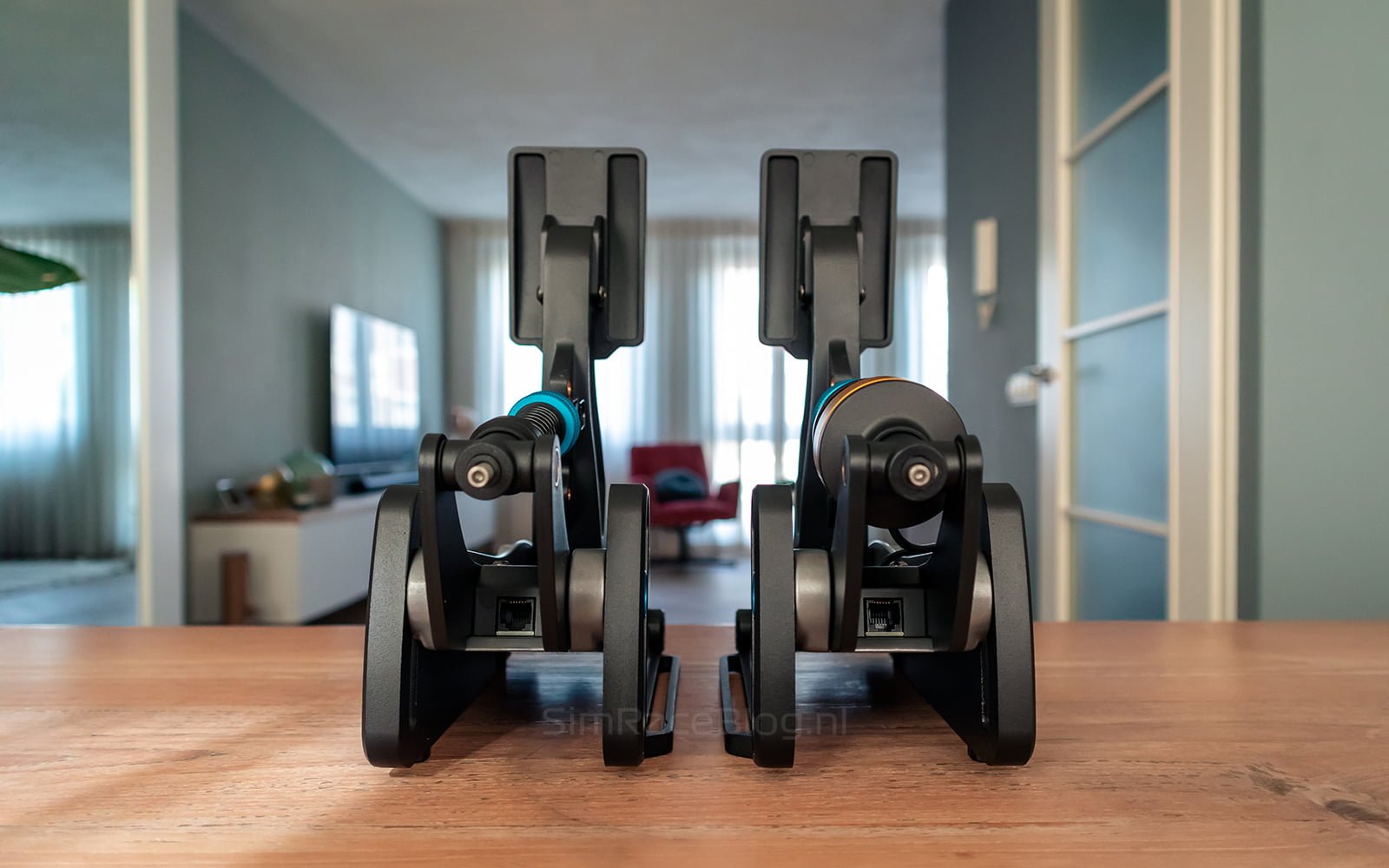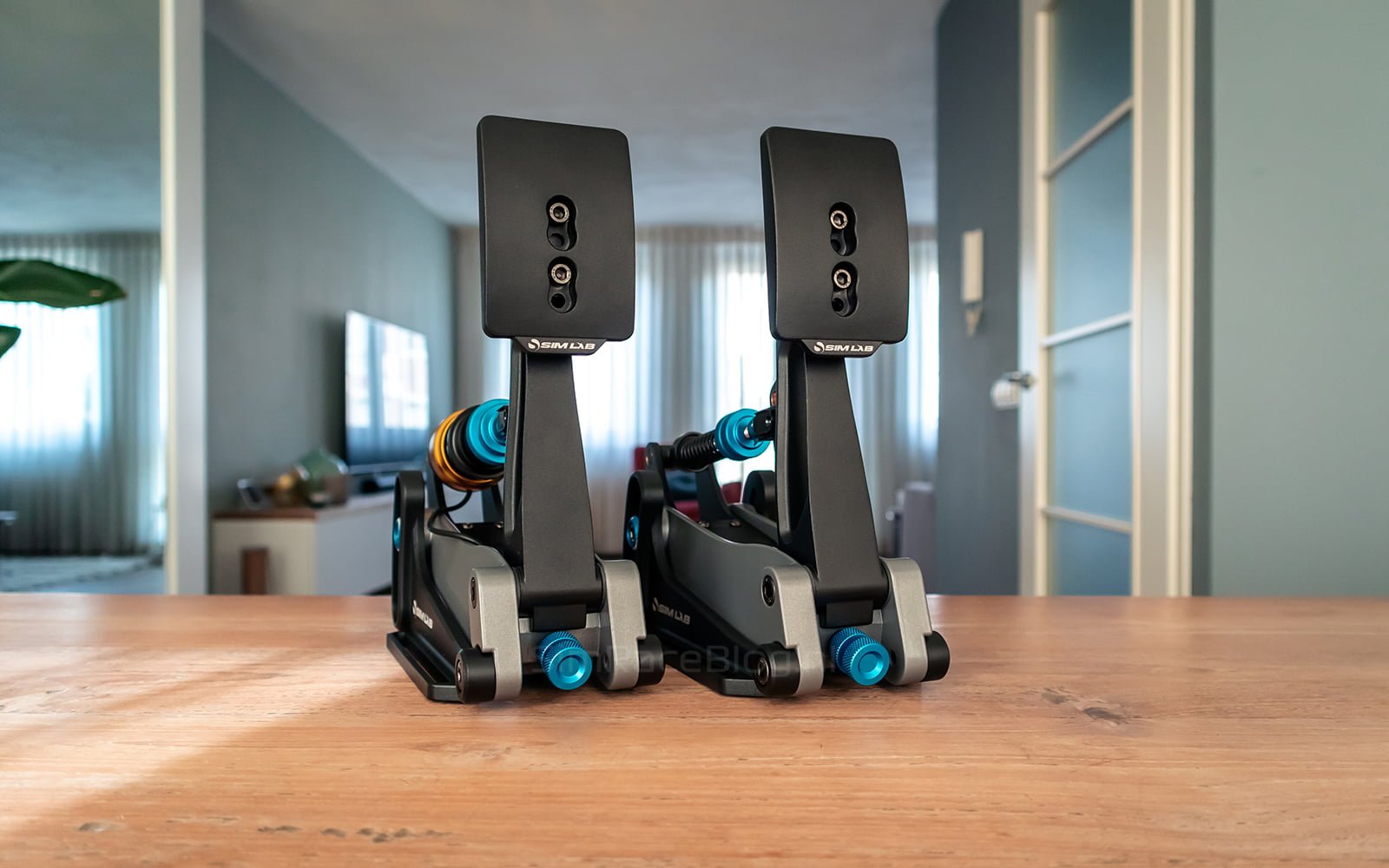Sim-Lab XP1 Loadcell Pedals
We’ve come to know Sim-Lab as a leading manufacturer of high-quality cockpits for sim racing. With aluminum cockpits, seats, and various accessories, Sim-Lab already offers a wide range of products for sim racing enthusiasts. As highlighted in our Handbrake XB1 Loadcell review, Sim-Lab has evolved beyond being solely a cockpit manufacturer. More and more premium sim racing-related products are hitting the market under the Sim-Lab or GRID label. Last February, we had the privilege of taking an in-depth look behind the scenes at Sim-Lab, where we witnessed several upcoming innovations, including the Sim-Lab Pedal Set XP1 Loadcell. At that time, various prototypes were still undergoing testing. The pedal set is now in full production, and we’ve had the chance to get our hands on a set.
The Sim-Lab Pedal Set XP1 Loadcell is designed specifically for use on the PC. It’s available in the Sim-Lab online store, with a current price of €549.00 for the 2-pedal set (throttle and brake) and €699.00 for the 3-pedal set (throttle, brake, and clutch) at the time of writing. If you want a standalone clutch, it costs €199.00. These prices include Dutch VAT and exclude shipping costs.

Packaging & Contents
After receiving the tracking information, a large brown box from UPS arrived at our doorstep two days later. Upon opening the box, we discovered a beautifully designed product box, well protected by bubble wrap. Unlike Sim-Lab’s previous deliveries in rather plain white boxes, their new products have taken things to the next level. Upgrading the product packaging is, in our opinion, a smart move by Sim-Lab. A well-designed package can significantly enhance the overall customer experience, and it worked for us because we were immediately excited for the contents.
Inside the product box, we found a flyer for the pedals featuring a quick start guide and a QR code leading to the comprehensive online manual. Beneath the flyer, there’s a black foam interior lining the product box. Upon removing the top layer, we saw the throttle and brake pedals right away. In the middle of the box, there’s a recess containing the controller along with various accessories. The included accessories comprise different springs for the throttle and brake pedals, additional elastomers, a Micro-USB/USB-A cable, two different lengths of connecting cables for the pedals to the controller, and various mounting tools for the pedals and controller. All in all, it’s another impressively comprehensive package from Sim-Lab, as we’ve come to expect, ready for us to dive right in.

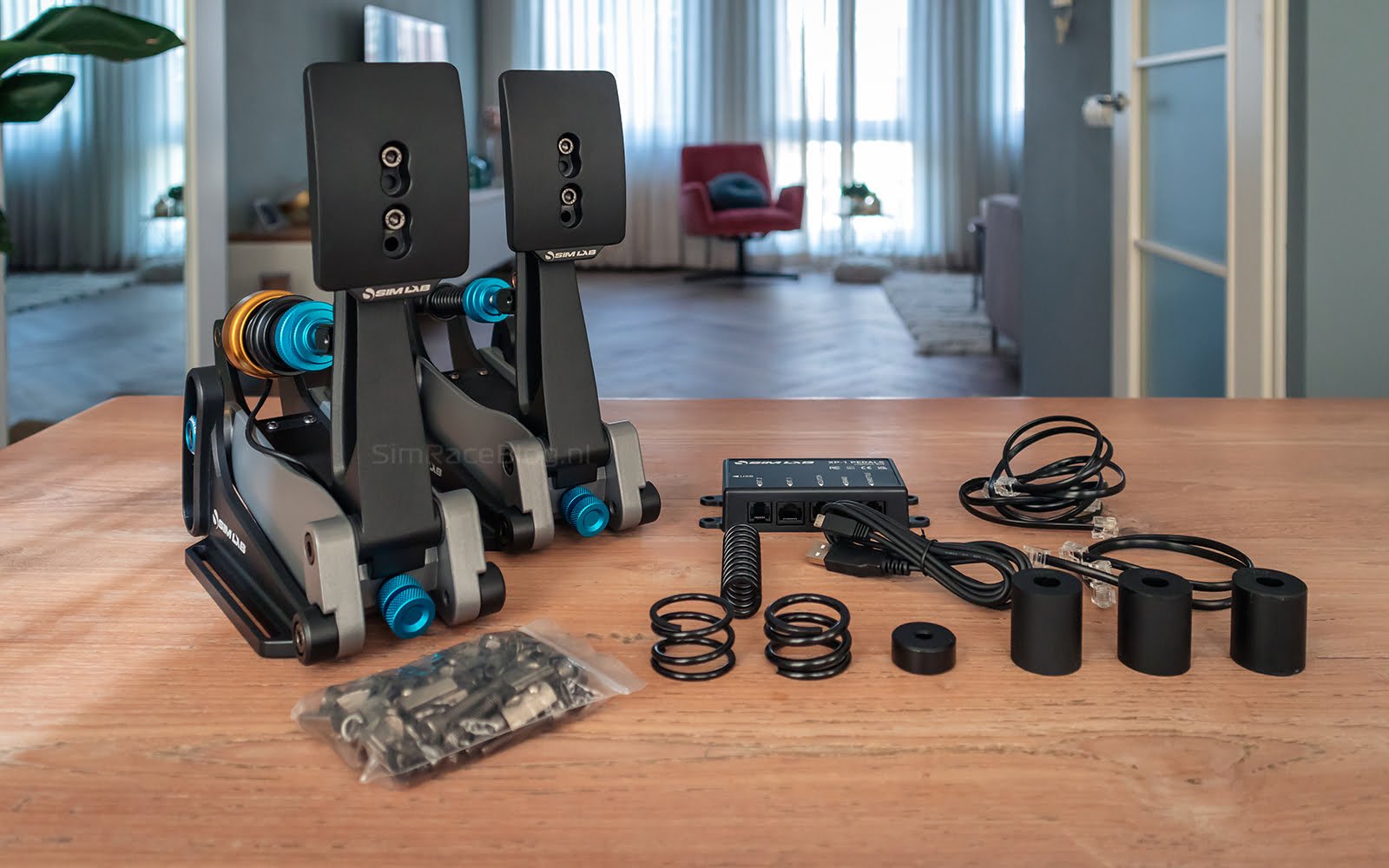


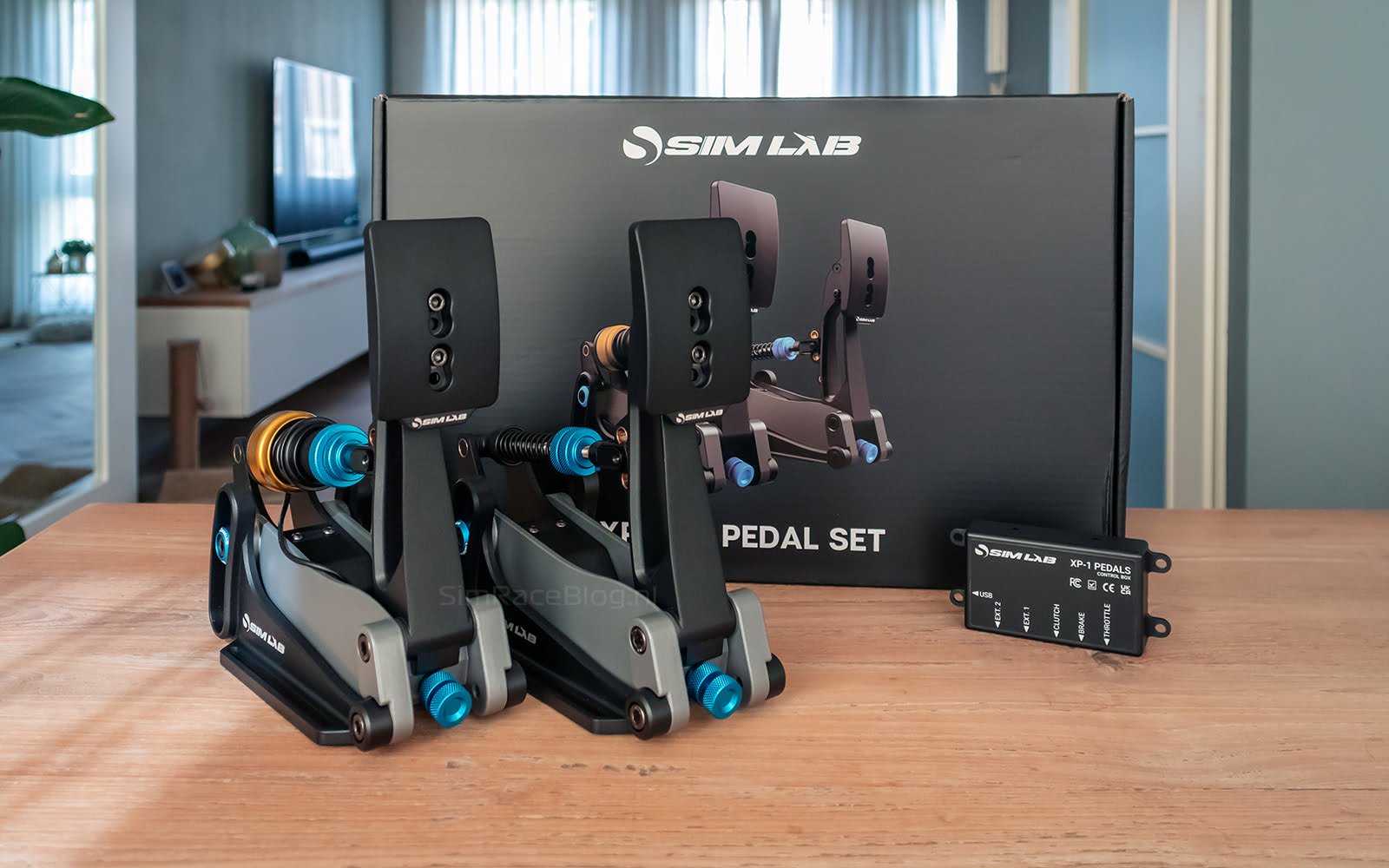
Technology & Quality
Fundamentally, almost all components of the Sim-Lab XP1 Loadcell pedal set are crafted from CNC-milled aluminum. Thanks to the extensive use of aluminum, it’s an incredibly lightweight pedal set, yet it exudes a robust and sturdy feel. The finishing of the pedal set can be aptly described as sublime; every edge is visibly well-crafted, and there isn’t a single sharp edge to be found. Moreover, we couldn’t identify any imperfections stemming from the production process. Consequently, the Sim-Lab XP1 Loadcell pedal set is undeniably one of the most finely finished pedal sets we’ve had the pleasure of handling. Beyond its aesthetic appeal and excellent finishing, it’s evident that careful consideration has been given to its practical and functional aspects.


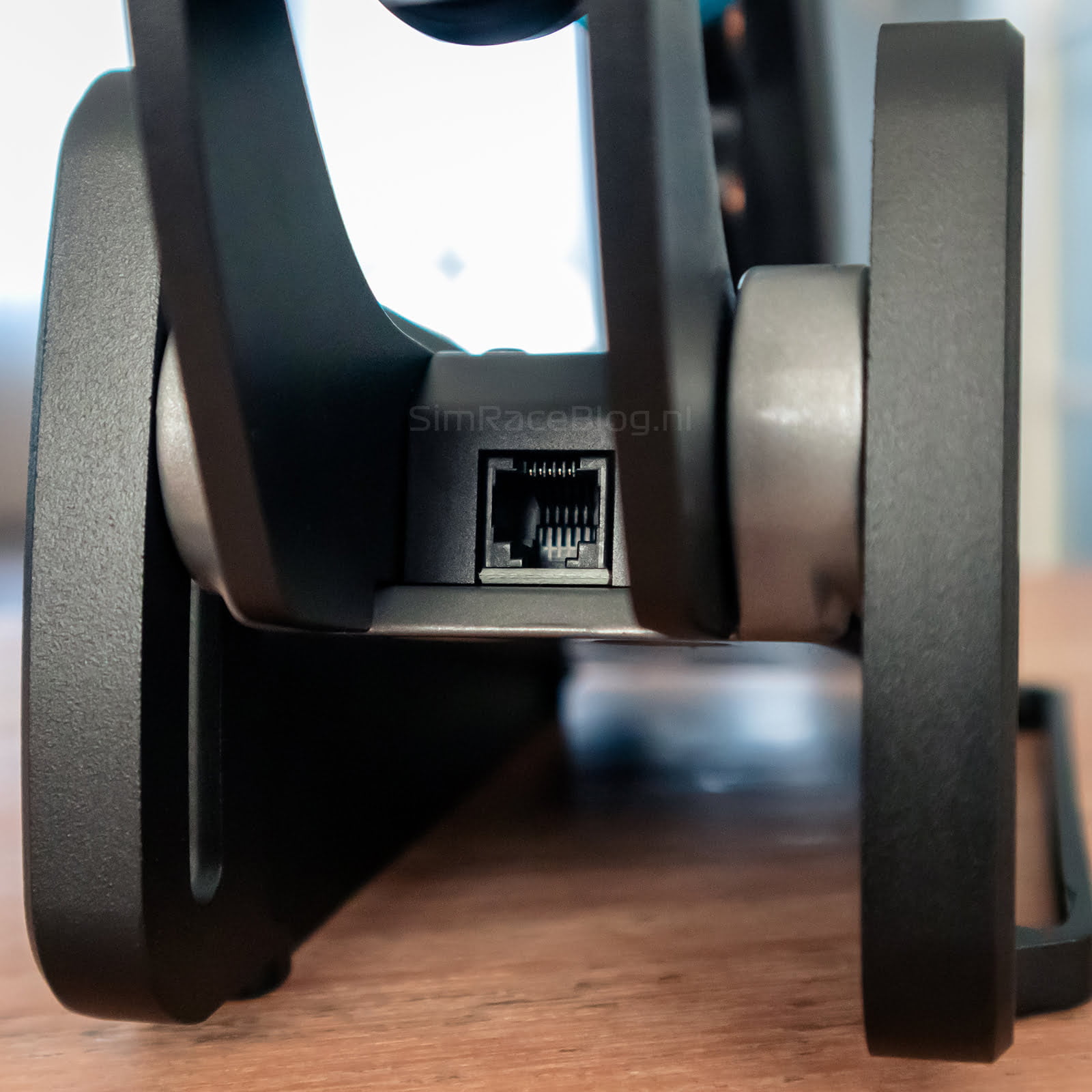
On both pedals, you can smoothly adjust the pedal angle on both sides using adjusting screws, within a range of 20 degrees. The footplates can be adjusted upward or downward in two positions, and the angle can be set in three positions. By utilizing the three adjustment points at the back of the pedal arm, you can fine-tune the pedal pressure. The travel can be adjusted using the blue adjusting screw at the front of the pedals.



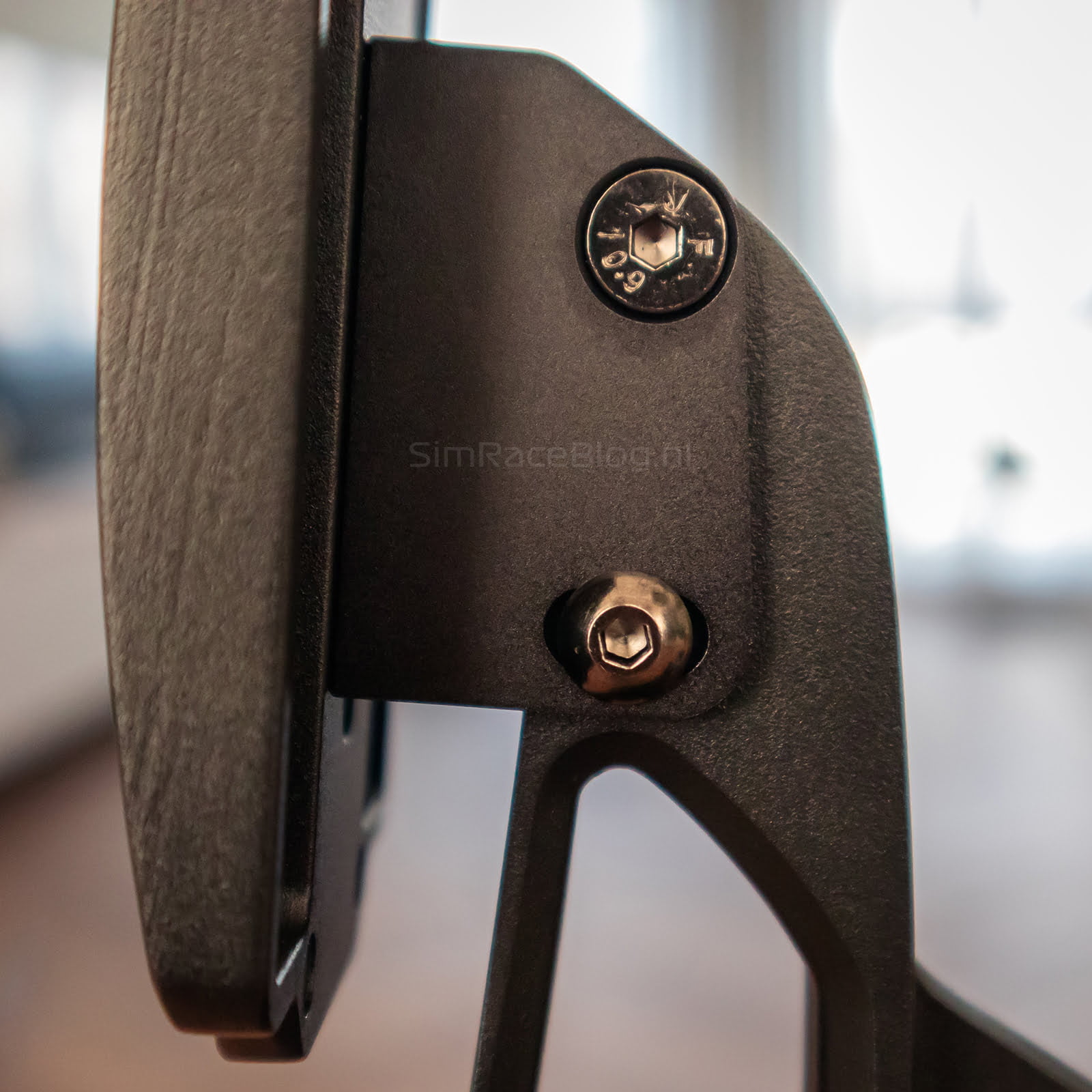

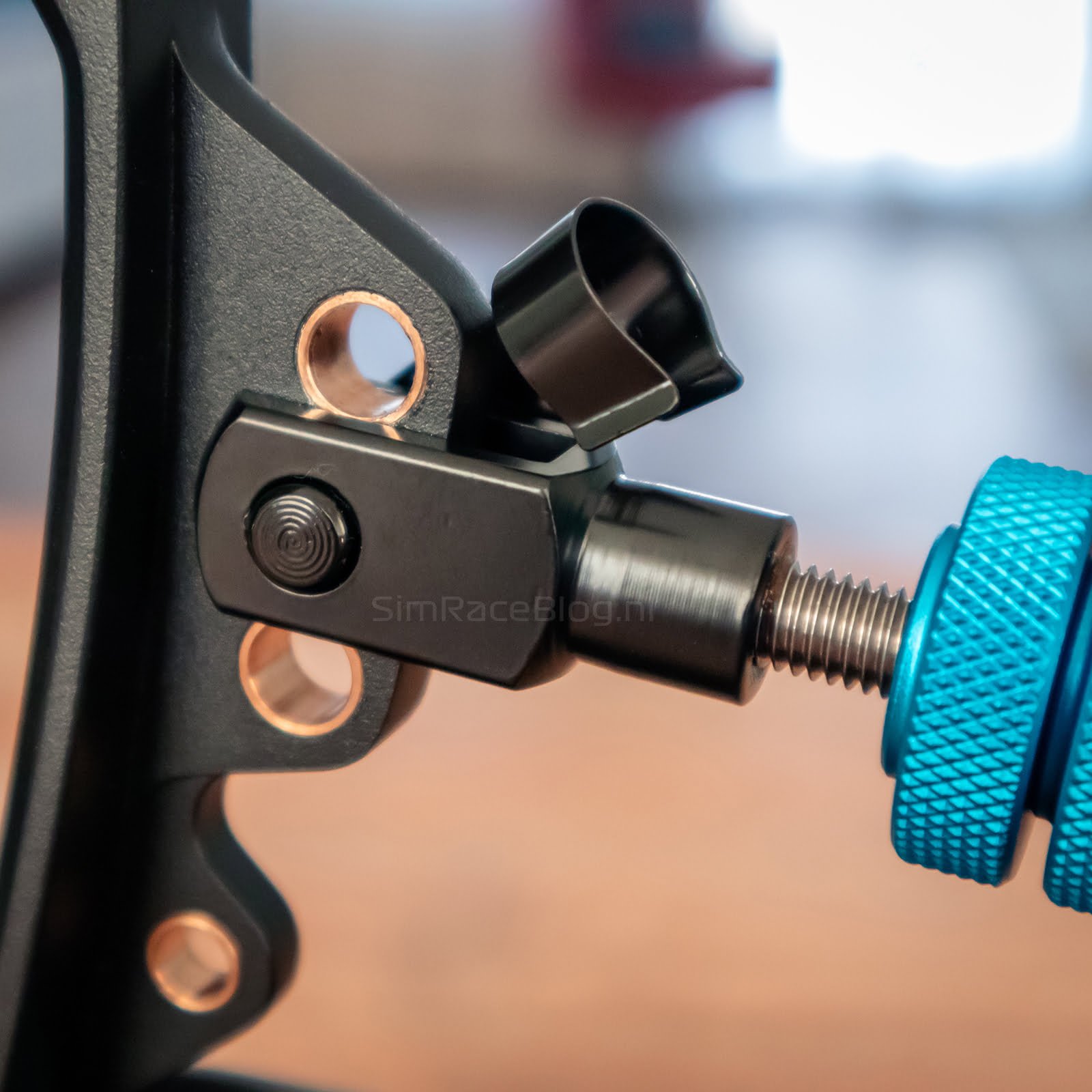


The Throttle Pedal
The throttle pedal of the Sim-Lab XP1 Loadcell pedal set features a hall effect sensor. This type of sensor, commonly used in the sim racing world, is renowned for its outstanding reliability. Due to its contactless operation, eliminating friction, a theoretically unlimited lifespan is guaranteed. A hall effect sensor utilizes a magnet to precisely measure the pedal position through magnetic field strength detection.







The Brake Pedal
The core of the Sim-Lab XP1 Loadcell pedal set lies in the combination of brake precision and a meticulously designed 200 kg load cell, which translates to a 100 kg pedal pressure. This load cell provides a 16-bit analog input, aiming to ensure unparalleled accuracy. The innovative in-line positioning of this load cell is intended to deliver excellent control and precision during braking.
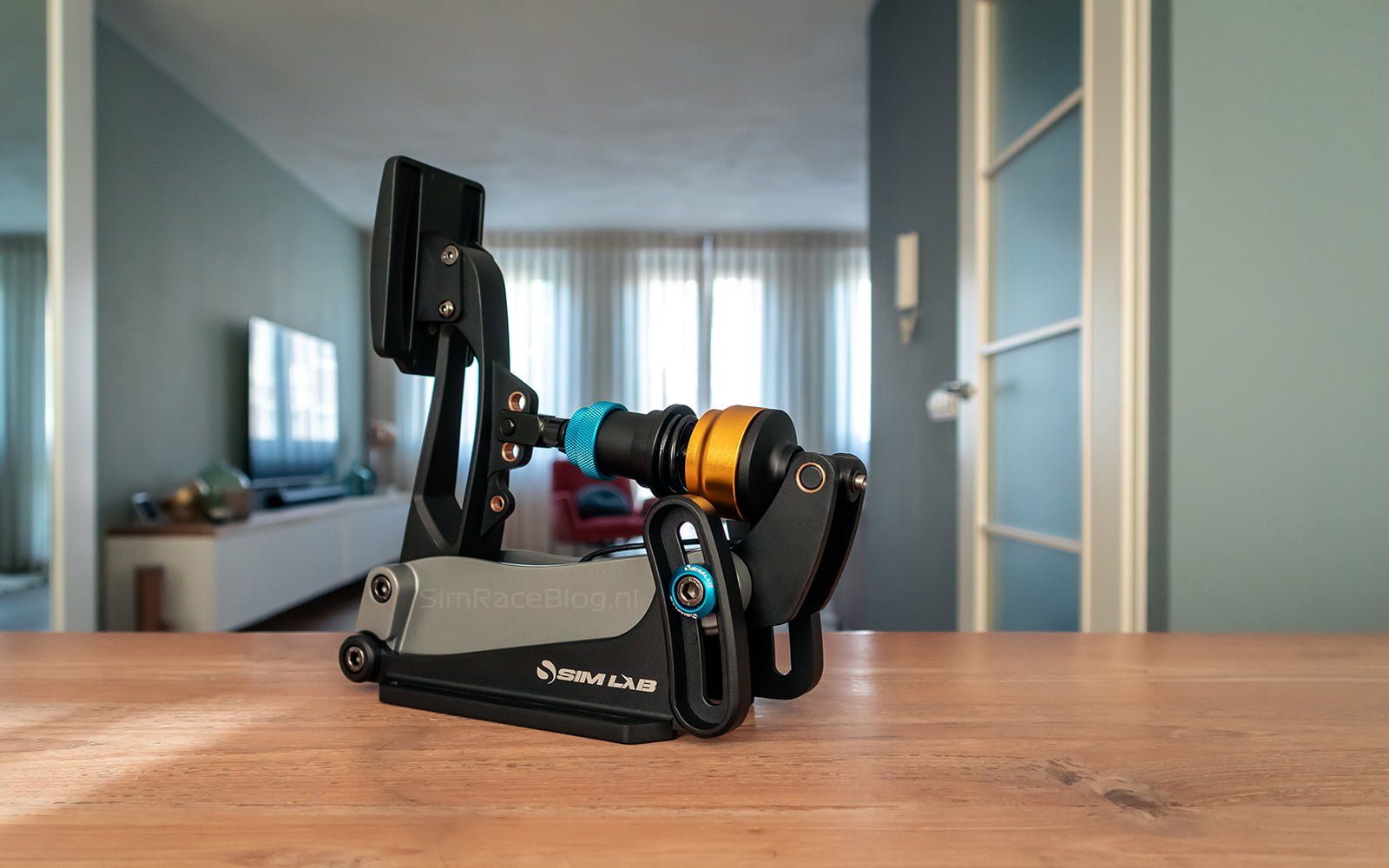


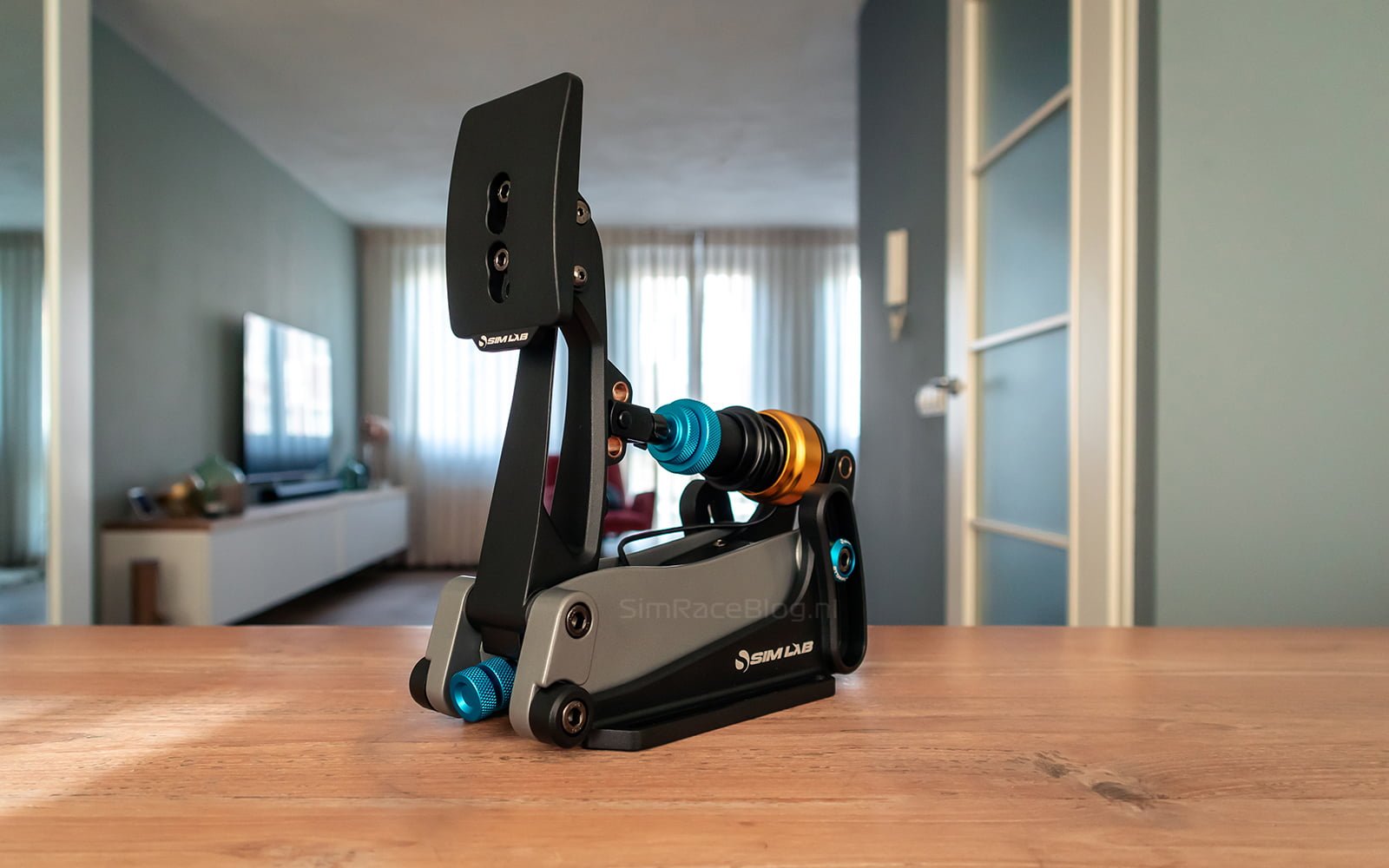
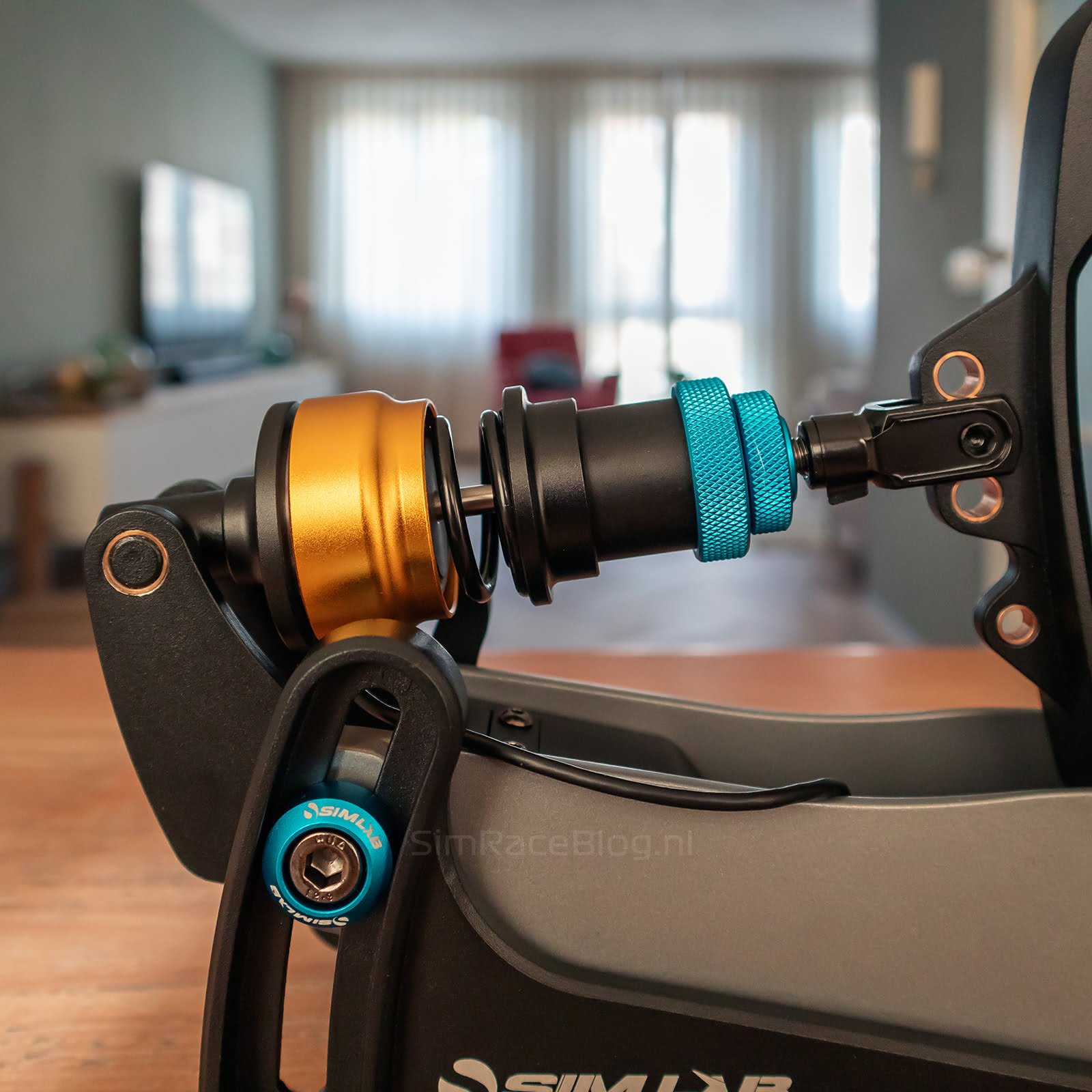

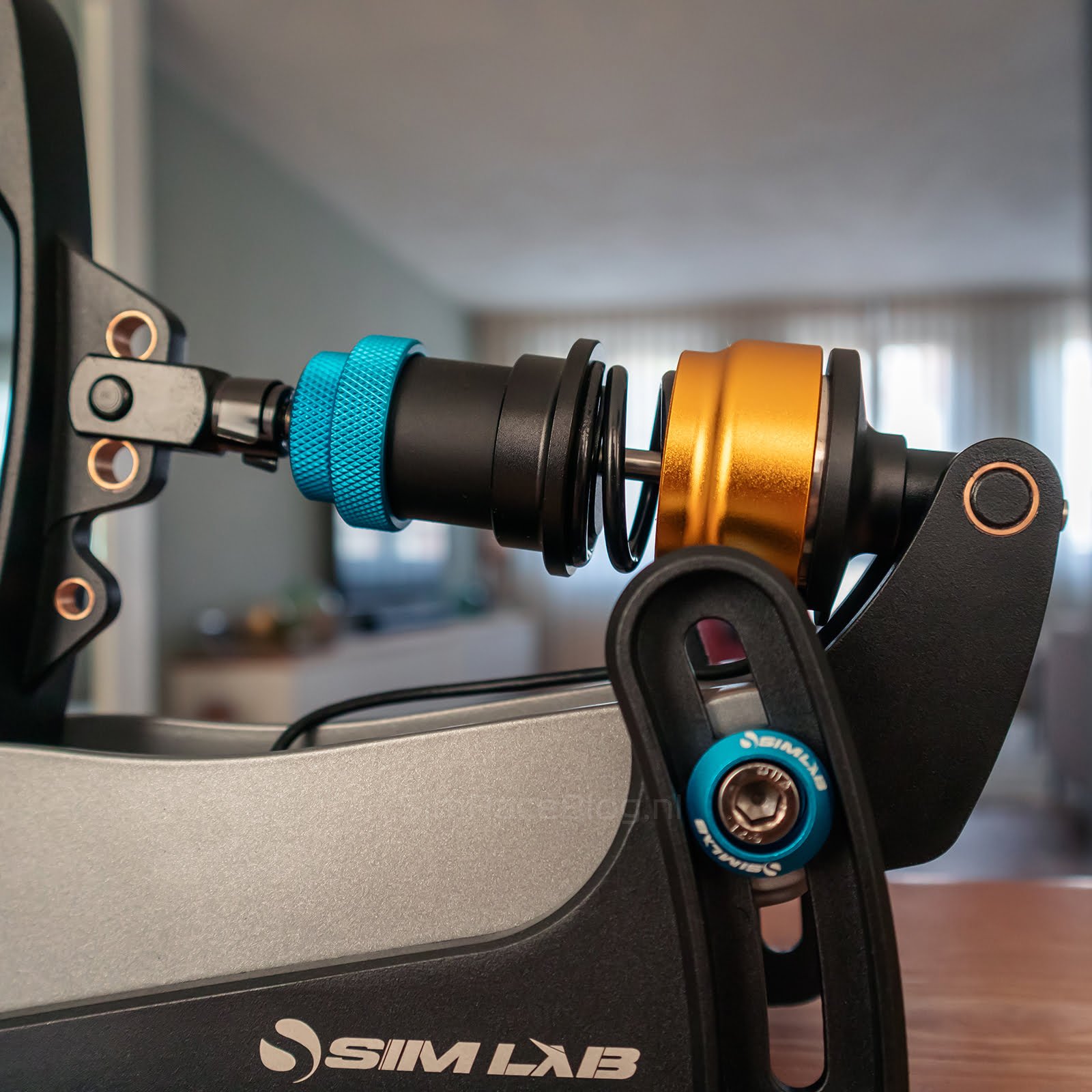
Software
To calibrate the pedals or adjust the curve, Sim-Lab has developed the RaceDirector software. After downloading the latest version of this RaceDirector software, you can activate the XP-1 pedals in the settings menu. Subsequently, a device page becomes available, allowing you to make various adjustments to the pedals. Sim-Lab provides a pre-defined profile for use, but you also have the option to create one or more profiles with your own preferences. The installation and use of the RaceDirector software are quite straightforward, but if you encounter any difficulties, Sim-Lab has provided a manual for assistance.

At times, updating the firmware of the pedals may be necessary, and for this purpose, Sim-Lab has provided the Firmware Updater tool. This tool needs to be downloaded separately and runs independently of the RaceDirector software. To update the pedals, the RaceDirector software (and SimHub) should not be active. After installing the tool, you can easily update the pedals with the latest firmware with just a few mouse clicks. Once the firmware update is complete, all that’s left is to reset the controller by disconnecting the USB cable for a few seconds. After this step, the firmware update procedure is complete.
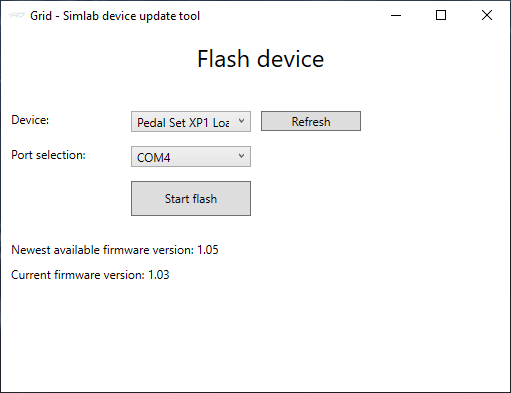

Assembly & Adjustment
We mount the Sim-Lab XP1 Loadcell pedal set on our Sim-Lab P1X Pro sim rig. Screwed directly onto the aluminum profiles of the pedal deck, we utilize the Sim-Lab heel plate for added comfort and as a heel stop. The mounting process is relatively straightforward, requiring only a bit of fine-tuning to ensure the pedal distance aligns well with our seating position. The controller comes with mounting points, which we attach to the bottom of our pedal deck. Connecting the cables to the controller and then to our PC, Windows automatically recognizes the pedals. Upon opening the RaceDirector software, the pedals are also visible there.
The pedals are fully adjustable without the need for many tools, making on-the-fly modifications quite convenient. Adjustments are made using the adjusting screws, all colored blue. At the front of the pedals, you can set the travel (how deep the pedal can be pressed) by hand-operating the adjusting screw. At the back of the pedals, the pedal angle can be adjusted using the adjusting screw, requiring an Allen key. Through the pedal axis, you can set pedal pressure (using the three adjustment points) and resistance (via the screw on the spring). After making the necessary adjustments to operate the pedals comfortably according to preferences, a quick recalibration in the RaceDirector software is needed. Recalibrating is done with a few mouse clicks, and you’re ready to hit the virtual racetrack!

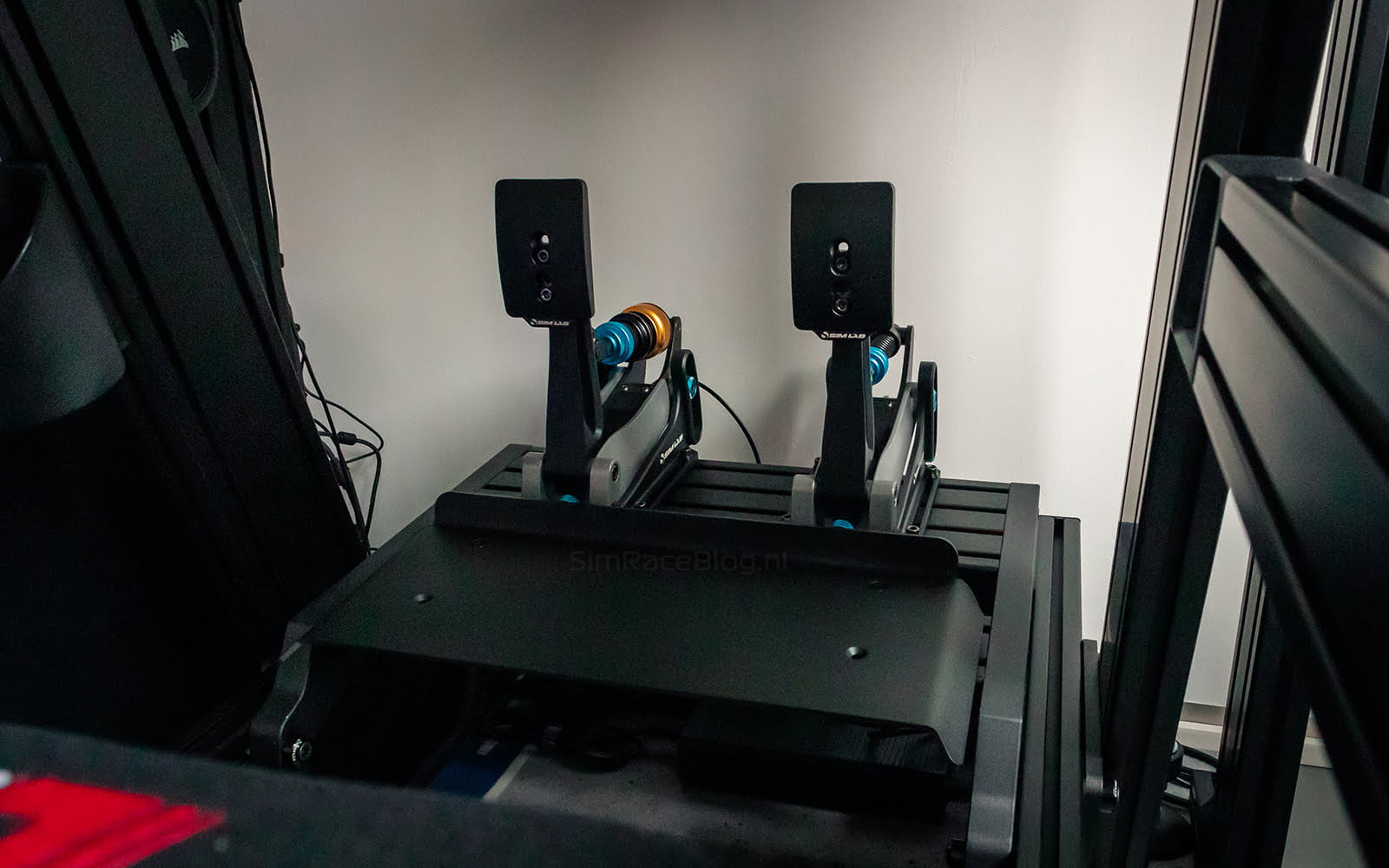



The Use
As enthusiasts of Assetto Corsa Competizione, we chose this racing game to put the pedals to the test. Driving our first few meters in virtual race cars, we immediately experienced a pleasant sensation, finding the pedals easy to operate. The pedals feel robust, responsive, smooth, and intuitively natural. There is no noticeable play in the pedals, whether sideways or during operation. The footplates of the pedals, set at the highest position, are nicely finished, allowing for comfortable use even with socks on. As mentioned earlier, we’re using the Sim-Lab heel plate, enhancing the comfort of our posture on the pedals.
Using the Throttle Pedal
The throttle pedal is particularly enjoyable to use. We are impressed with the 16-bit Hall-effect sensor on the pedal, making the throttle extremely precise and responsive, facilitating easy modulation. The standard-mounted spring feels quite soft in all positions, resulting in a light pedal feel during operation. Opting for the hard spring, adding a bit more preload to the spring, and setting the axis to the lowest position, we found the pedal to be well-balanced and comfortable for us to operate. We set the travel to the maximum, and while we initially felt it could have had an extra half-centimeter, we got accustomed to it after a few laps.




Using the Brake Pedal
Starting with the default settings (60A medium elastomer) on the brake pedal, we found this medium elastomer to have a comfortable resistance, but soon realized that, despite being a medium elastomer, the pedal felt somewhat soft for our preferences. After switching to the 70A (hardest version) elastomer and adjusting the necessary pre-load on the pedal, it truly came into its own in our virtual Porsche 992 II GT3 R.
The load cell sensor, capable of handling up to 200 kg, performs well and is well-suited for demanding braking scenarios. With no noticeable flex, the pedal instills confidence to press it forcefully. Fully pressing the pedal during braking and then smoothly releasing it poses no issues; the brake pedal responds precisely as expected. Similar to the throttle, we would have appreciated a bit more travel on the brake pedal to allow for a slightly deeper press.
Naturally, we tested the pedal with the 40A (supersoft) and 50A (soft) elastomers, but we found these to be too soft, resulting in a sluggish and sticky feel when releasing the brake pedal. In addition to the standard spring (medium), the two extra springs (soft and hard) allow you to adjust the pre-load settings. This enables you to simulate a softer or harder pre-load for the two-stage feeling of the distance between the brake disc and brake pad. For our purposes, focused on GT cars, the medium spring works well, and the other springs can be used to replicate the feel of street cars to formula cars.







We’ve had the opportunity to test the Sim-Lab XP1 Loadcell pedals for over 2 months to provide a comprehensive assessment. Throughout this period, we encountered no notable issues, and the pedals performed flawlessly, meeting our expectations. The pedals have pleasantly surprised us, offering a remarkable level of quality for a relatively affordable price. In terms of completeness, we have no complaints, and we were well-equipped with the included springs and elastomers.
Conclusion
When testing the Sim-Lab XP1 Loadcell pedals in Assetto Corsa Competizione, our overall experience has been positive. The pedals are neatly finished, providing comfortable and firm control without noticeable play, both laterally and in the direction of use. The smooth finish of the footplates makes them comfortable for use with socks, and when paired with the Sim-Lab heel plate, you achieve a very comfortable driving position. It would have been nice, however, if both pedals had an additional half-centimeter of travel, allowing for a slightly deeper press.
The throttle pedal stands out with its 16-bit Hall-effect sensor, resulting in extremely precise and responsive modulation. While the default spring is perceived as too light, the option to install a stiffer spring, adjust the spring tension, and change the axis position provides enough flexibility to customize the pedal to personal preference.
The brake pedal, equipped with a load cell sensor capable of handling up to 200 kg, impresses with its resistance and solid feel, especially when using the harder elastomer. The option to adjust pre-load settings with different springs adds an extra dimension to the versatility of the brake pedal.
We’ve extensively used the Sim-Lab XP1 Loadcell pedals for over two months and haven’t encountered any noteworthy issues, emphasizing their durability and reliability. The price-to-quality ratio is notably positive, with the pedals offering an impressive level of quality at a relatively low price. In terms of completeness and performance, the Sim-Lab XP1 Loadcell pedals comfortably meet expectations, making them a solid choice for sim racers seeking high-quality pedals on a budget.
If you’re as excited as we are after reading our review, the pedal set is available on the Sim-Lab webshop. At the time of writing, the 2-pedal set (throttle and brake) is priced at €549.00, and the 3-pedal set (throttle, brake, and clutch) is €699.00. A separate clutch can be purchased for €199.00. These prices include Dutch VAT and exclude shipping costs.
Do you want to stay informed about SimRaceBlog content, news, announcements and (future) give-aways? Follow us on Instagram @simraceblognl and/or our Discord channel.

